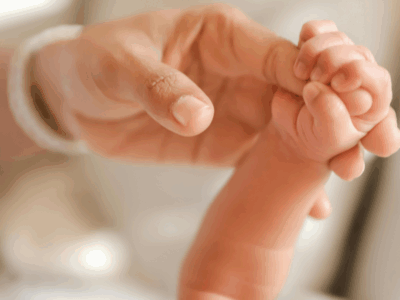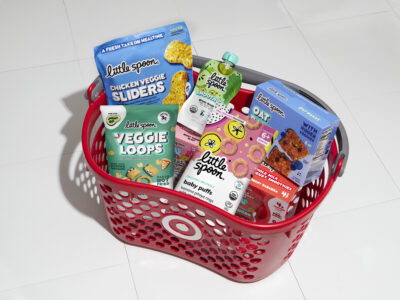Eat, sleep, poop (or diaper blowout) and repeat. Babies, especially the brand new ones, may have tiny stomachs but boy can they eat *A LOT.* If you’re a new parent around here, you probably have a ton of questions about when to feed them, how many ounces, if you should wake them to stay on schedule, when to start solids and probably 100 more questions. To help you get started, we created sample feeding schedules for your mini based on their age. BUT, every baby is different, so please discuss with your pediatrician or nutritionist if you have any questions.
6-7 months
Babies are most accepting of new things when they are happy and all of their needs have been met. It’s helpful to offer solids 30 minutes – 1 hour after their wake up bottle/nursing session so they are hungry but not starving and feel well rested and ready to try new things.
Some 6 month olds will be ready for 2 solid meals per day, so if that is the case then offering solids 30 minutes – 1 hour before their last bottle of the day would be a good second meal time.
7-8 months
At this point your baby is probably getting more accustomed to having solid food in their daily routine. Continue to create positive associations at mealtime, making it as happy and joyful as possible. Your baby will likely be ready to do 2 meals per day every day, so stick with the morning and evening routine of one post wake-up bottle meal and one pre-bed time bottle meal.
8-9 months
This is a common time to start doing “breakfast, lunch, and dinner” with your baby so you can introduce a lunchtime solid meal about an hour after their 3rd bottle or nursing session of the day while continuing with the post-wake up bottle and pre-night time bottle breakfast and dinner routine. This is also an important time to introduce textured/chunky food, such as Little Spoon’s Transition Meals, and gauge readiness for finger foods. Finally, it’s another milestone moment and time to start practicing drinking water by offering small amounts in an open cup.
10-11 months
This period before your baby’s first birthday is crucial in terms of developing mealtime skills with finger foods. At around 11 months many parents will opt to switch from purees, and mashed foods to finger foods exclusively. Because the dexterity required can be a bit more effort some babies will seem less interested in finger foods but you should continue to try to offer soft, small foods that your baby can feed themselves. This is also a time that babies will frequently drop a bottle or nursing session as a result of the increase in solid food.
12-16 months
This is the time period where babies will discontinue infant formula entirely (depending on the guidance of your pediatrician) and some families may continue to nurse on occasion, throughout the day. This is when your baby should be having 3 finger-food meals per day and will often have an appetite for 1-2 snacks in between meals as well. If you are noticing less of an appetite at mealtime, taper off snacks temporarily. Since there can be some adjustments to nap time around 16 months and beyond, it can help to adjust mealtimes to accommodate any nap dropping so your baby’s nap isn’t impacted by being hungry.



